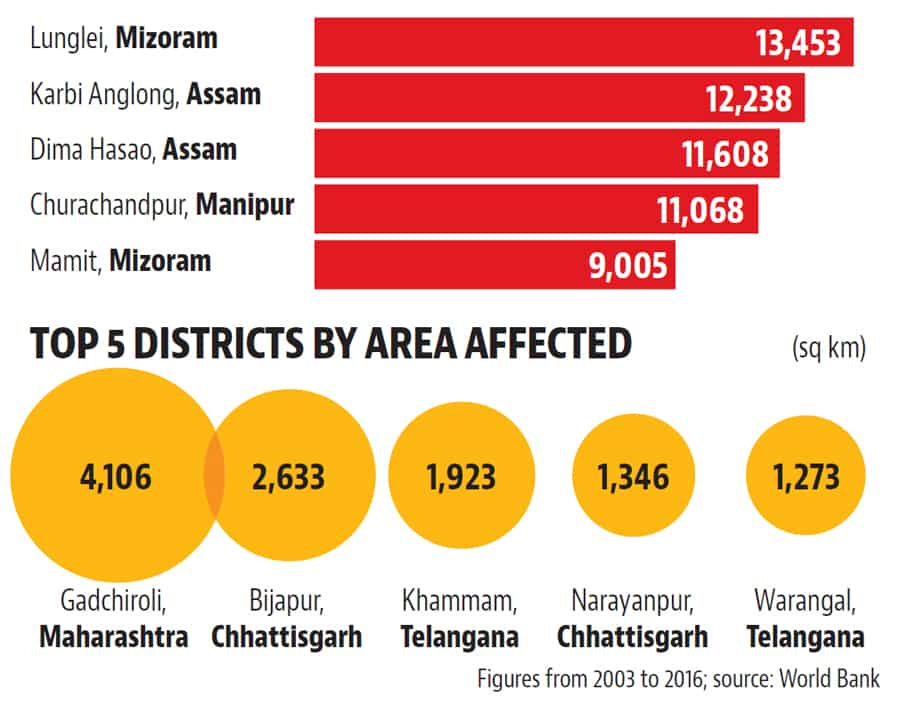More forest fires may burn as climate change triggers extreme weather patterns, warns govt
A recent report said dry tropical forests are increasingly under pressure from climate change, deforestation, fragmentation and fire. It further identifies weather, climate change-induced extremities, topography and people as the main causes of forest fires.
Forest fires in India might increase in the coming days because of extreme weather patterns triggered by climate change, warns a report by the Union environment ministry and the World Bank. It shows 20 districts in central India accounted for 48% of the total area burnt by forest fires between 2003 and 2016.

Around 44% of the forest fires, which mostly include smaller fires linked to jhum cultivation, or slash and burn agriculture, occurred in another 20 districts in that time period, primarily in the north-eastern states that represent 3% of India’s land area, says the report titled ‘Strengthening Forest Fire Management in India’. It was released by environment minister Harsh Vardhan on Tuesday.
In a separate event earlier in the day, Vardhan said action plans on climate change, conceptualised about a decade ago, were being revised taking into account the current realities of global warming.

In a recent report, the Intergovernmental Panel on Climate Change (IPCC), a global body set up in 1988, has said fires in moist tropical forests are becoming more frequent and severe. Dry tropical forests are increasingly under pressure from climate change, deforestation, fragmentation and fire.
“One study of the effects of climate change on tropical dry forests in South Asia cited by IPCC, for example, finds that by the end of this century most of India’s dry forests are projected to experience climate conditions beyond the envelope that they can tolerate,” says the report on forest fires.
It uses National Remote Sensing Centre (NRSC) data to identify regional patterns. Fires in the north-east, associated with jhum, are found to be concentrated and cyclical in nature, while those in central India are more expansive.
The report identifies weather, climate change-induced extremities, topography and people as the main causes of forest fires. The dryness of soil and heat too are important triggers.
Dry and moist deciduous forests in the borderlands of Chhattisgarh, Maharashtra and Telangana are affected by fires every year, says the report. Parts of the western Himalayas, such as Uttarakhand and Himachal Pradesh that experienced severe forest fires in 2016, account for a smaller share of burnt area in comparison with central India.
Vardhan said only an “aggressive strategy” can control forest fires that cause an annual loss of about ₹1,101 crore.
District-level analyses for data from 2003 to 2016 also show that the monsoon can give an early warning of severity of the next year’s fire. A district that experiences slightly higher rainfall than its long-term average during the monsoon is likely to experience fewer fires the following year.
Forest officers in 11 states, interviewed by the authors of the report, agree that humans cause the most number of forest fires, with negligence and the collection of non-timber forest products (NTFPs) in Chhattisgarh, Jharkhand, Madhya Pradesh, Odisha and Telangana being the catalysts.
But Tushar Dash, of the Community Forest Rights-Learning and Advocacy group, says, “Forest dwellers who collect NTFPs cannot be blamed for forest fires. Most tribal communities have their own rules and regulations and a well established system of fire management.”






